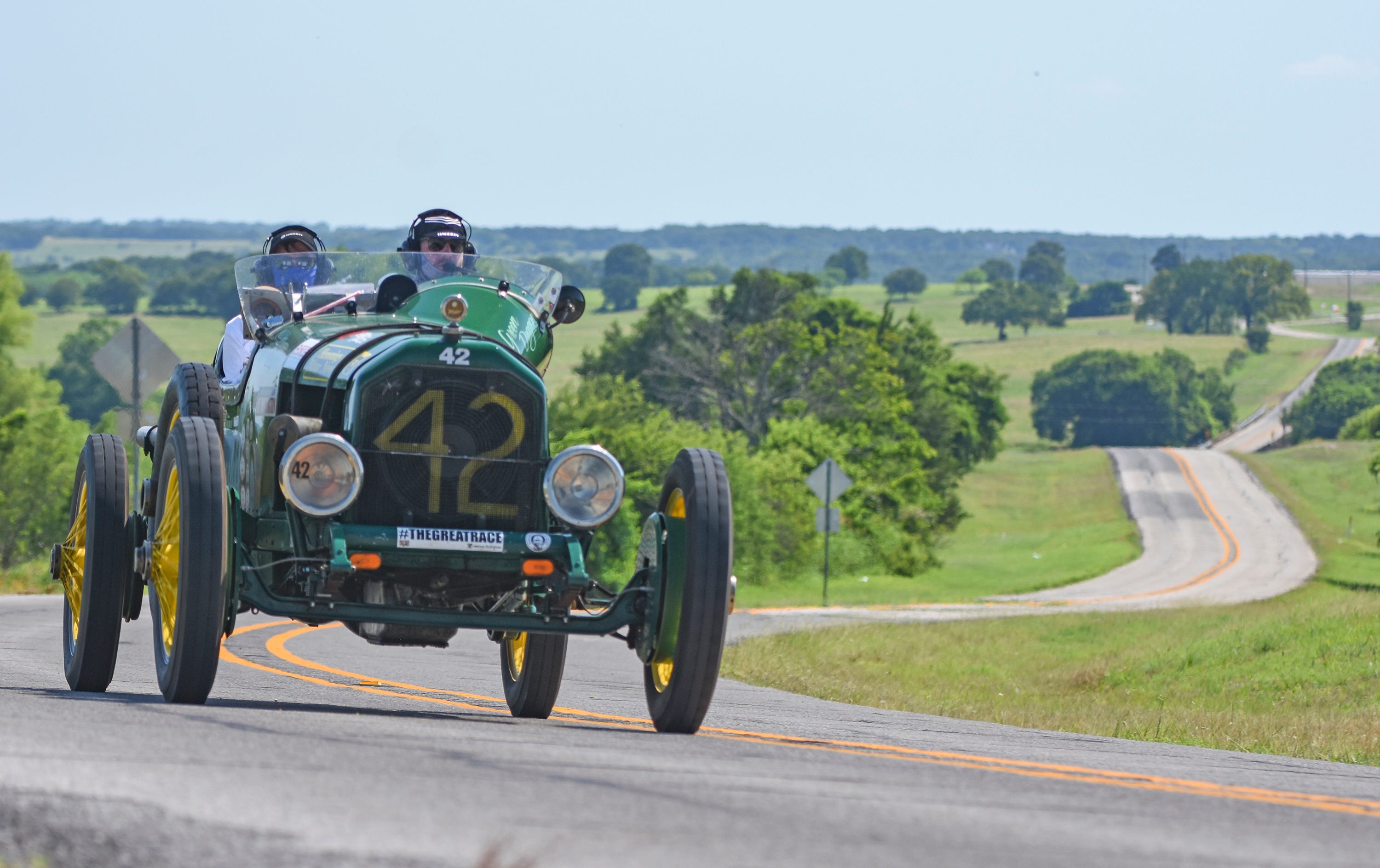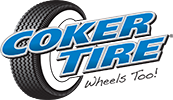The Great Race is Coming to a Town Near You!

As summertime approaches, the crew here at Coker Tire prepares itself for one of the coolest old car adventures of all time. It’s called the Hemmings Motor News Great Race presented by Hagerty Drivers Club and it’s an event that Coker Tire owns and organizes in-house. This event is a time, speed, endurance rally for cars built in 1974 and earlier, and it’s an event with nearly 40 years of history under its belt. Coker Tire bought the operation in 2010 and the Chattanooga crew put together its first rally in 2011. Now, more than 10 years later, we’ve covered a lot of ground in the United States and Canada, and we’re ready to rack up some more miles this summer.
When car enthusiasts initially hear about the Great Race, they often compare it to the Hot Rod Power Tour or other long distance car tours. While the distance can sometimes be comparable, the experience is very different, as the Great Race stands in a category all its own. This event is a true competition, with 120 teams coming from all over the country to compete for more than $150,000 in cash prizes. The overall winner takes home $50,000.
So, how do you win the Great Race? It’s a rather complicated competition, but think of it as a precision driving test, with hundreds of prescribed maneuvers, over the course of nine days and 2,300 miles. A rally master determines the precise route, as well as the perfect course time, based on a pre-determined speed for each portion of the route. The teams, made of a driver and a navigator, must follow cryptic instructions with great attention to detail, with hopes of scoring as close to the prescribed time as possible. The lowest score wins. Obstacles, such as traffic and farm implements often complicate the situation for the teams, but there are opportunities to make up time in between the secret checkpoint locations. Most of the scored portion of the rally takes place on back roads, providing a safe environment for the classic cars, while also offering beautiful scenery along the way.
The Great Race route changes every year, and for 2022, travels from Warwick, Rhode Island to Fargo, North Dakota. The route travels through a total of ten states during the nine-day adventure. If you’re wondering how the route is chosen, there are often themes like Route 66, the Lincoln Highway or the Dixie Highway. For this year, the idea revolved around visiting two distinct states that had not yet been a part of any Great Race route. The Great Race had visited 46 of the 48 continental United States, leaving only Rhode Island and North Dakota on the to-do list.
In between the start and finish lines, we have lunch and evening city stops, which are always free to the public. We invite folks to come check out the Great Race when it rolls into town, as it’s often a once-in-a-lifetime opportunity to see these cars pass through. Many of the cars are specially prepared for this type of rallying. Highly calibrated speedometers are used for precision and the cars are allowed certain modern upgrades (radial tires, disc brakes, etc.) for safety purposes. Each car has a scoring handicap, also known as an age factor, based on the production year of the car and the engine. For instance, a 1916 Hudson receives a much greater factor than a 1972 Camaro, giving the Hudson a scoring advantage to balance out the difficulties of driving and maintaining a 100-plus year-old car for 2,300 miles. For the hot rodders out there, engine swaps are allowed, but the Great Race technical staff will then score you based on the year of the engine. So, if you’re competing in a 1932 Ford with a 350ci small block Chevy, you would then be scored as a 1967, which is the introductory year of that engine.
The beauty of the age factor is that it encourages people to drive extremely old cars. We used a 1916 Hudson as an example, as this is a favorite among Great Racers. These cars are very reliable and make enough horsepower to navigate any terrain. Despite the scoring differences, the sweet spot seems to be the early 1930’s. In fact, last year’s winners, a pair of sisters from Georgia, were driving a 1932 Ford coupe, powered by a Flathead and three-speed manual transmission. Olivia and Genna Gentry were the youngest team to ever win the Great Race, and they took home the $50,000 in dominating fashion.
For the 2022 event, the Gentry sisters will be back in action, along with several other heavy hitters in Great Race competition. A total of 120 teams will take the green flag in Warwick, Rhode Island on Saturday, June 18th. From there, hosted city stops will take place in Windsor, CT, Newburgh, NY, Binghamton, NY, Wellsville, NY, Erie, PA, Medina, OH, Perrysburg, OH, South Bend, IN, Plainfield, IL, Sun Prairie, WI, Wisconsin Dells, WI, Chippewa Falls, WI, Duluth, MN, Brainerd, MN, Detroit Lakes, MN with a huge finish line celebration in Fargo, ND on Sunday, June 26th. The exact route is kept secret for competition purposes, but you can check out the full schedule of hosted city stops at www.greatrace.com to see if this event is coming to a town near you!


So, how do you win the Great Race? It’s a rather complicated competition, but think of it as a precision driving test, with hundreds of prescribed maneuvers, over the course of nine days and 2,300 miles. A rally master determines the precise route, as well as the perfect course time, based on a pre-determined speed for each portion of the route. The teams, made of a driver and a navigator, must follow cryptic instructions with great attention to detail, with hopes of scoring as close to the prescribed time as possible. The lowest score wins. Obstacles, such as traffic and farm implements often complicate the situation for the teams, but there are opportunities to make up time in between the secret checkpoint locations. Most of the scored portion of the rally takes place on back roads, providing a safe environment for the classic cars, while also offering beautiful scenery along the way.
The Great Race route changes every year, and for 2022, travels from Warwick, Rhode Island to Fargo, North Dakota. The route travels through a total of ten states during the nine-day adventure. If you’re wondering how the route is chosen, there are often themes like Route 66, the Lincoln Highway or the Dixie Highway. For this year, the idea revolved around visiting two distinct states that had not yet been a part of any Great Race route. The Great Race had visited 46 of the 48 continental United States, leaving only Rhode Island and North Dakota on the to-do list.


In between the start and finish lines, we have lunch and evening city stops, which are always free to the public. We invite folks to come check out the Great Race when it rolls into town, as it’s often a once-in-a-lifetime opportunity to see these cars pass through. Many of the cars are specially prepared for this type of rallying. Highly calibrated speedometers are used for precision and the cars are allowed certain modern upgrades (radial tires, disc brakes, etc.) for safety purposes. Each car has a scoring handicap, also known as an age factor, based on the production year of the car and the engine. For instance, a 1916 Hudson receives a much greater factor than a 1972 Camaro, giving the Hudson a scoring advantage to balance out the difficulties of driving and maintaining a 100-plus year-old car for 2,300 miles. For the hot rodders out there, engine swaps are allowed, but the Great Race technical staff will then score you based on the year of the engine. So, if you’re competing in a 1932 Ford with a 350ci small block Chevy, you would then be scored as a 1967, which is the introductory year of that engine.
The beauty of the age factor is that it encourages people to drive extremely old cars. We used a 1916 Hudson as an example, as this is a favorite among Great Racers. These cars are very reliable and make enough horsepower to navigate any terrain. Despite the scoring differences, the sweet spot seems to be the early 1930’s. In fact, last year’s winners, a pair of sisters from Georgia, were driving a 1932 Ford coupe, powered by a Flathead and three-speed manual transmission. Olivia and Genna Gentry were the youngest team to ever win the Great Race, and they took home the $50,000 in dominating fashion.
For the 2022 event, the Gentry sisters will be back in action, along with several other heavy hitters in Great Race competition. A total of 120 teams will take the green flag in Warwick, Rhode Island on Saturday, June 18th. From there, hosted city stops will take place in Windsor, CT, Newburgh, NY, Binghamton, NY, Wellsville, NY, Erie, PA, Medina, OH, Perrysburg, OH, South Bend, IN, Plainfield, IL, Sun Prairie, WI, Wisconsin Dells, WI, Chippewa Falls, WI, Duluth, MN, Brainerd, MN, Detroit Lakes, MN with a huge finish line celebration in Fargo, ND on Sunday, June 26th. The exact route is kept secret for competition purposes, but you can check out the full schedule of hosted city stops at www.greatrace.com to see if this event is coming to a town near you!
